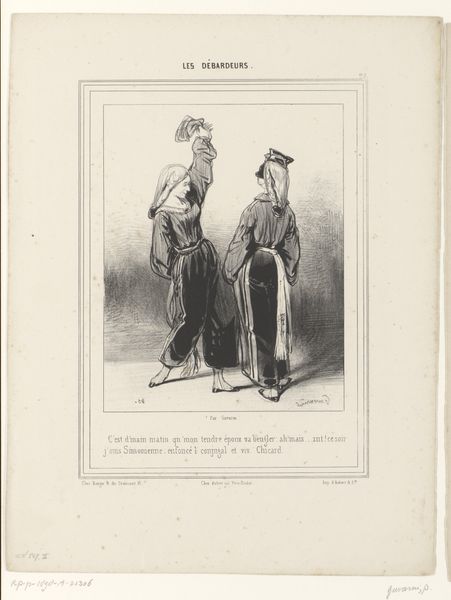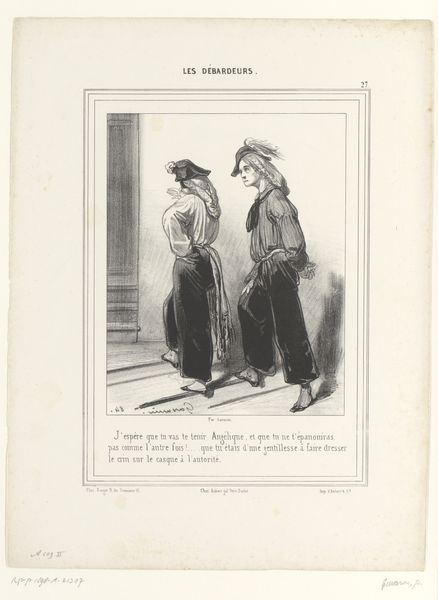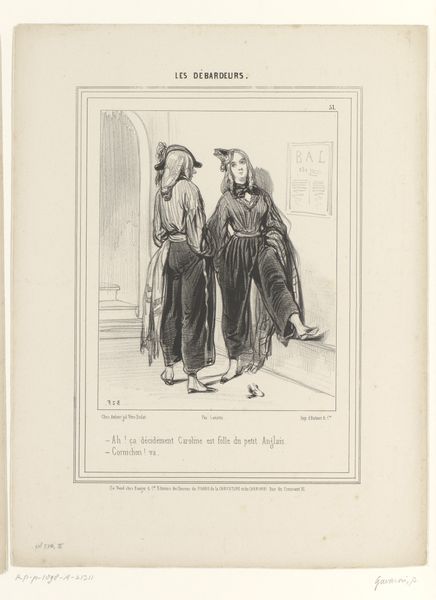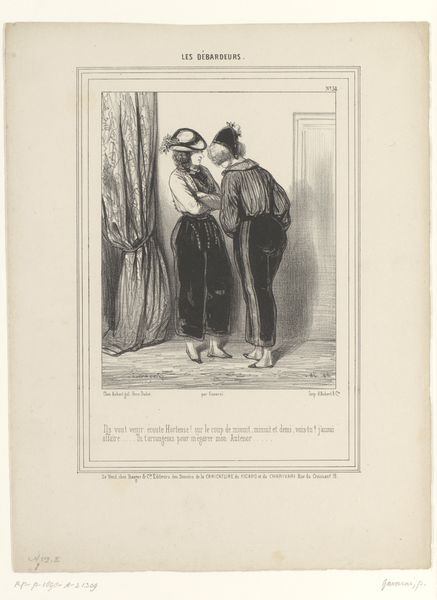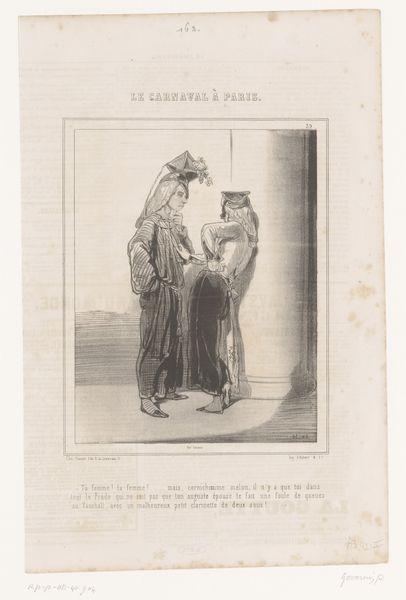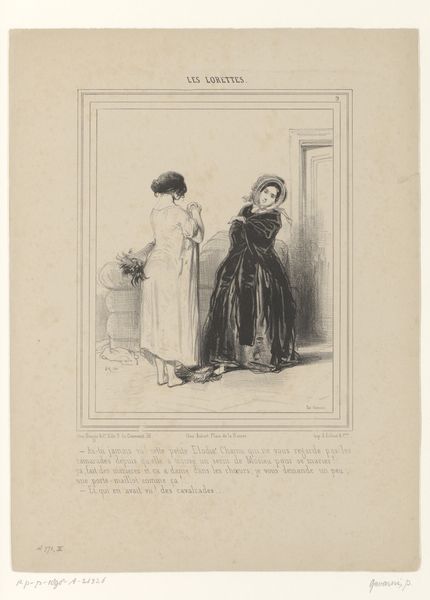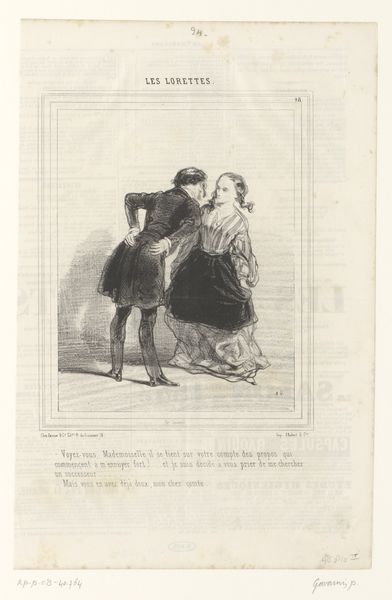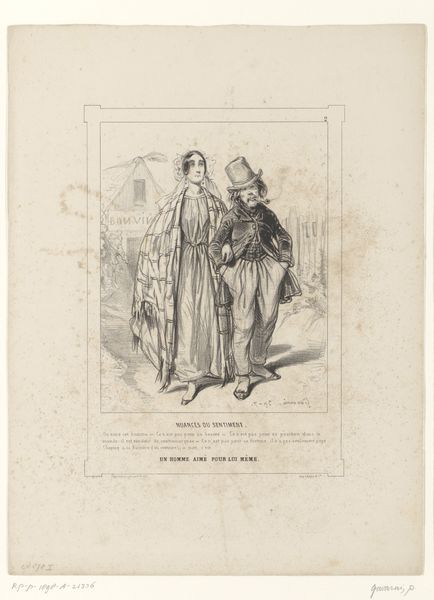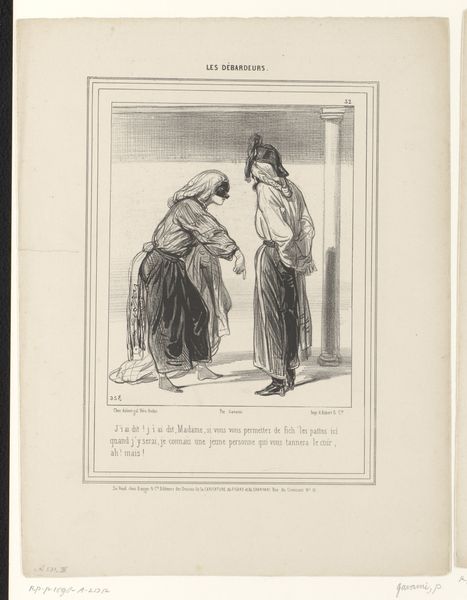
drawing, lithograph, print
#
portrait
#
drawing
#
lithograph
# print
#
caricature
#
old engraving style
#
traditional media
#
figuration
#
romanticism
#
line
#
genre-painting
Dimensions: height 357 mm, width 276 mm
Copyright: Rijks Museum: Open Domain
Curator: Here we have Paul Gavarni's "Liefdespaar in modieuze kostuums," a lithograph from 1842, residing here at the Rijksmuseum. Editor: My immediate sense is of theatricality; there is something slightly ludicrous about their postures and getups. It feels like a satirical jab at the stylish elite of the time. Curator: It is precisely that! Gavarni was a keen observer and critic of Parisian society. The "modieuze kostuums," as the title indicates, are exaggerated. These figures represent specific class anxieties, and perhaps challenge normative ideas about gender and behavior within them. Editor: Their clothing immediately recalls stage costumes, which evokes Commedia dell'arte, with a strong element of role-playing. Their exaggerated outfits and the slightly affected stance of the taller figure serve to heighten that effect. Are there popular iconographies he's subverting here? Curator: Undoubtedly. Gavarni utilizes the tropes of Romanticism, while subtly disrupting the idealized image. This piece emerges from the social upheavals after the French Revolution and how norms and behaviours surrounding class and gender were being destabilized. The attire—specifically their garments—carries symbolic meaning of resistance, blurring binaries to hint at the societal shifts percolating just beneath the surface of Parisian culture. Editor: You’ve got me thinking now of that hat atop the woman—is it meant to invoke, perhaps a symbol of aspiration or a mocking of aristocratic frivolity? The dark line work of the print also makes it difficult to discern the expressions—it heightens their anonymity which perhaps broadens Gavarni's target? Curator: The lack of distinct expressions lends them a type of universality and reinforces the idea that it's less about these particular people and more about the performance of identity. It points to Gavarni’s incisive commentary about class posturing, and gender ambiguities, at the time, using humor as a vehicle for more complex discussions. Editor: I can see it! The more we unpack this, the richer the meaning becomes. A deceptively simple snapshot with layers of social critique embedded in those carefully crafted lines. Curator: Absolutely, and seeing how these types of societal caricatures become tropes throughout history offers relevant lessons to us today.
Comments
No comments
Be the first to comment and join the conversation on the ultimate creative platform.
